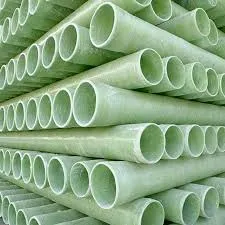
-
 Afrikaans
Afrikaans -
 Albanian
Albanian -
 Amharic
Amharic -
 Arabic
Arabic -
 Armenian
Armenian -
 Azerbaijani
Azerbaijani -
 Basque
Basque -
 Belarusian
Belarusian -
 Bengali
Bengali -
 Bosnian
Bosnian -
 Bulgarian
Bulgarian -
 Catalan
Catalan -
 Cebuano
Cebuano -
 China
China -
 China (Taiwan)
China (Taiwan) -
 Corsican
Corsican -
 Croatian
Croatian -
 Czech
Czech -
 Danish
Danish -
 Dutch
Dutch -
 English
English -
 Esperanto
Esperanto -
 Estonian
Estonian -
 Finnish
Finnish -
 French
French -
 Frisian
Frisian -
 Galician
Galician -
 Georgian
Georgian -
 German
German -
 Greek
Greek -
 Gujarati
Gujarati -
 Haitian Creole
Haitian Creole -
 hausa
hausa -
 hawaiian
hawaiian -
 Hebrew
Hebrew -
 Hindi
Hindi -
 Miao
Miao -
 Hungarian
Hungarian -
 Icelandic
Icelandic -
 igbo
igbo -
 Indonesian
Indonesian -
 irish
irish -
 Italian
Italian -
 Japanese
Japanese -
 Javanese
Javanese -
 Kannada
Kannada -
 kazakh
kazakh -
 Khmer
Khmer -
 Rwandese
Rwandese -
 Korean
Korean -
 Kurdish
Kurdish -
 Kyrgyz
Kyrgyz -
 Lao
Lao -
 Latin
Latin -
 Latvian
Latvian -
 Lithuanian
Lithuanian -
 Luxembourgish
Luxembourgish -
 Macedonian
Macedonian -
 Malgashi
Malgashi -
 Malay
Malay -
 Malayalam
Malayalam -
 Maltese
Maltese -
 Maori
Maori -
 Marathi
Marathi -
 Mongolian
Mongolian -
 Myanmar
Myanmar -
 Nepali
Nepali -
 Norwegian
Norwegian -
 Norwegian
Norwegian -
 Occitan
Occitan -
 Pashto
Pashto -
 Persian
Persian -
 Polish
Polish -
 Portuguese
Portuguese -
 Punjabi
Punjabi -
 Romanian
Romanian -
 Russian
Russian -
 Samoan
Samoan -
 Scottish Gaelic
Scottish Gaelic -
 Serbian
Serbian -
 Sesotho
Sesotho -
 Shona
Shona -
 Sindhi
Sindhi -
 Sinhala
Sinhala -
 Slovak
Slovak -
 Slovenian
Slovenian -
 Somali
Somali -
 Spanish
Spanish -
 Sundanese
Sundanese -
 Swahili
Swahili -
 Swedish
Swedish -
 Tagalog
Tagalog -
 Tajik
Tajik -
 Tamil
Tamil -
 Tatar
Tatar -
 Telugu
Telugu -
 Thai
Thai -
 Turkish
Turkish -
 Turkmen
Turkmen -
 Ukrainian
Ukrainian -
 Urdu
Urdu -
 Uighur
Uighur -
 Uzbek
Uzbek -
 Vietnamese
Vietnamese -
 Welsh
Welsh -
 Bantu
Bantu -
 Yiddish
Yiddish -
 Yoruba
Yoruba -
 Zulu
Zulu
Alternative Materials for Sewer Pipes A Closer Look at Fiberglass Options
Fiberglass Sewer Pipe A Modern Alternative
In the ever-evolving world of construction and infrastructure, choosing the right materials for sewer systems is paramount. One innovative option that has gained traction in recent years is fiberglass sewer pipe. This material presents a modern alternative to traditional piping options such as clay, PVC, and concrete.
Advantages of Fiberglass Sewer Pipe
The primary advantage of fiberglass sewer pipe lies in its exceptional durability. Unlike traditional materials, fiberglass is resistant to corrosion, which is essential in wastewater applications where exposure to harsh chemicals can occur. This resistance significantly extends the lifespan of the pipe, reducing the need for frequent replacements and maintenance—a cost-effective benefit for municipalities and private developers alike.
Another remarkable feature of fiberglass is its lightweight nature. This characteristic simplifies transportation and installation, allowing for easier handling on site. As a result, projects can be completed more rapidly, minimizing labor costs and reducing the overall timeline for construction. Additionally, the flexibility of fiberglass piping can accommodate ground movement, which helps to prevent cracking—a common issue with more rigid materials.
Environmental Impact
fiberglass sewer pipe alternative.

One cannot overlook the environmental benefits of utilizing fiberglass sewer pipe. The manufacturing process of fiberglass tends to produce fewer harmful emissions compared to traditional materials like PVC. Furthermore, fiberglass has a lower overall environmental footprint, which aligns with contemporary sustainability goals in construction practices. As municipalities aim to enhance their eco-friendly initiatives, the adoption of such materials becomes increasingly important.
Installation and Maintenance
Moreover, fiberglass sewer pipes can be installed with fewer joints than conventional options. Fewer joints translate to reduced risk of infiltration and exfiltration, which are often significant issues in sewer systems. Seamless and smooth inner walls improve the flow capacity and reduce the likelihood of blockages, enhancing the system's efficiency and longevity.
Maintenance for fiberglass pipes is also generally easier. With their resistance to buildup and corrosion, these pipes require less frequent inspections and cleaning. This alleviates the burden on municipal resources, allowing for a more streamlined approach to sewer management.
Conclusion
In conclusion, fiberglass sewer pipe stands out as an innovative alternative to traditional piping solutions for sewer systems. With its durability, lightweight properties, environmental benefits, and ease of installation and maintenance, it addresses many of the challenges faced by conventional sewer materials. As infrastructure demands evolve, the adoption of fiberglass piping represents a significant step toward creating more sustainable and efficient wastewater management systems. As more stakeholders recognize these advantages, the future of sewer construction may very well be fiberglass.









